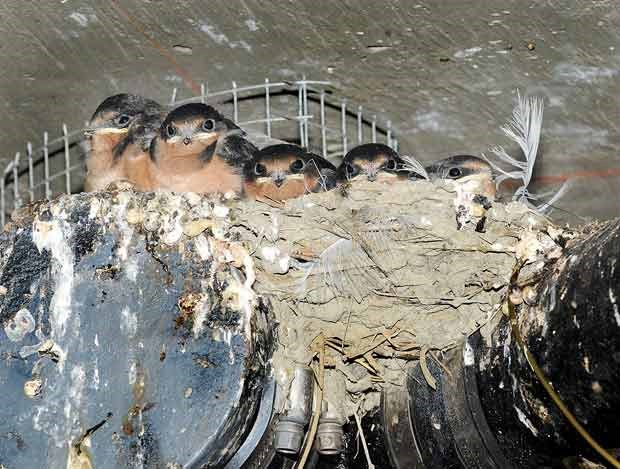Every year for the past eight years, barn swallows have been nesting in an underground parkade in Steveston.
This year, three families, consisting of 16 newly hatched babies and their mothers, have taken up residence yet again at Britannia at Steveston condominium complex.
They are really sweet and I could watch them all day, said Geoff Snell, the site manager at the condo building. When you pass by them, the little ones pop their heads up.
The mothers show up around the end of May to lay their eggs and stay around, usually, until the end of July, or until their babies can fly.
Snell said the migratory birds are a huge hit with the residents.
We put cardboard boxes underneath their nests for additional protection, he said, adding everyone in the building enjoys listening to their twittering in the morning and watching the moms fly in and out at lightening speed. They really arent a nuisance, unlike the crows and seagulls, and they keep the bug, especially the mosquito, population down.
But this is not just a cute bird story, its an important environmental one. As of this year, the barn swallow has been assessed as threatened by the Committee on the Status of Endangered Wildlife in Canada. (Visit www.cosewic.gc.ca.)
The barn swallow is one of the worlds most common bird species. Yet for decades now, swallows are declining at an alarming rate and Canada is no exception, said Snell. Canadian Breeding Bird Survey data has shown that in the last 20 years, the population of barn swallows has fallen by 70 per cent.
According to All About Birds: The Cornell Lab of Ornithology, These birds feed almost exclusively in flight, flying lower than many other swallow species and often nearly hugging the ground or water surface.
They catch flies, mosquitoes, and other prey in midair above fields, marshes, lakes, and coastal waters, (acting as a natural way to reduce insect pests in the area).
Most barn swallows now nest in man-made structures, usually near water.
Kris Bauder, Richmond Nature Park coordinator, said the number of barn swallows is dwindling largely due to the lack of habitat.
Historically, there were lots of barn swallows in Richmond, she said. This environment, the Fraser Delta, has everything they need to thrive and survive. What is problematic is that where they spend fall and winter, which is either southern United States or Central America, has lost a lot of their natural habitat due to human activity.



